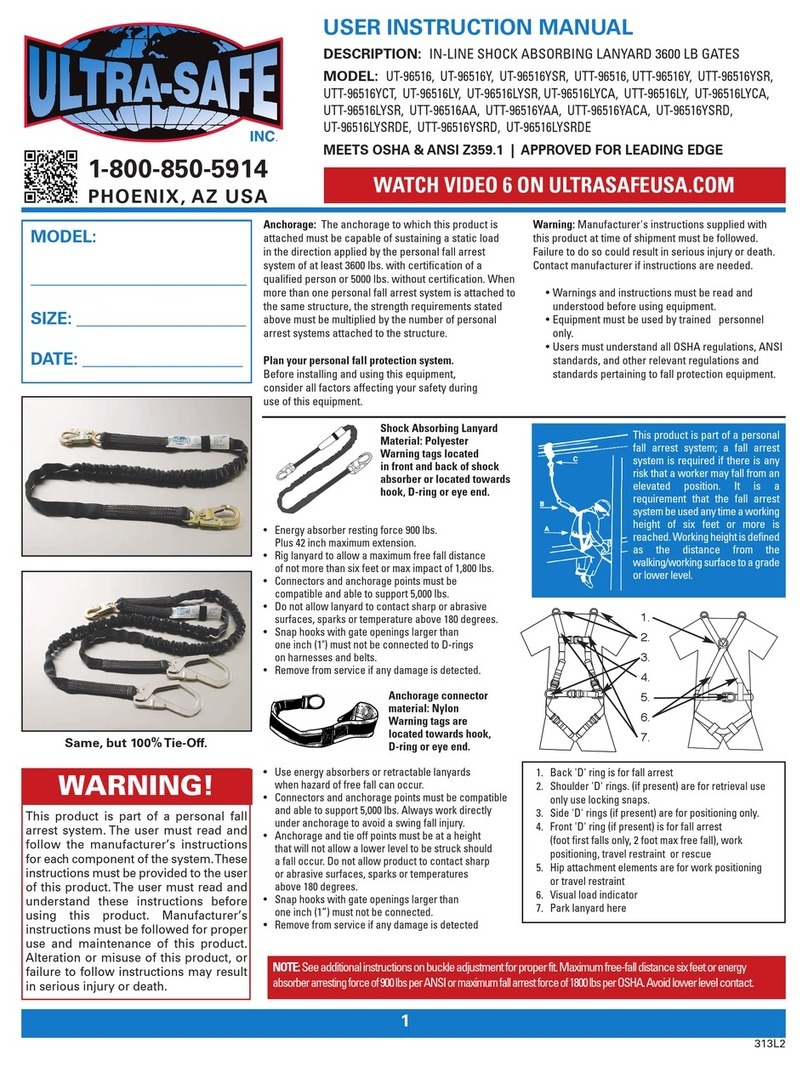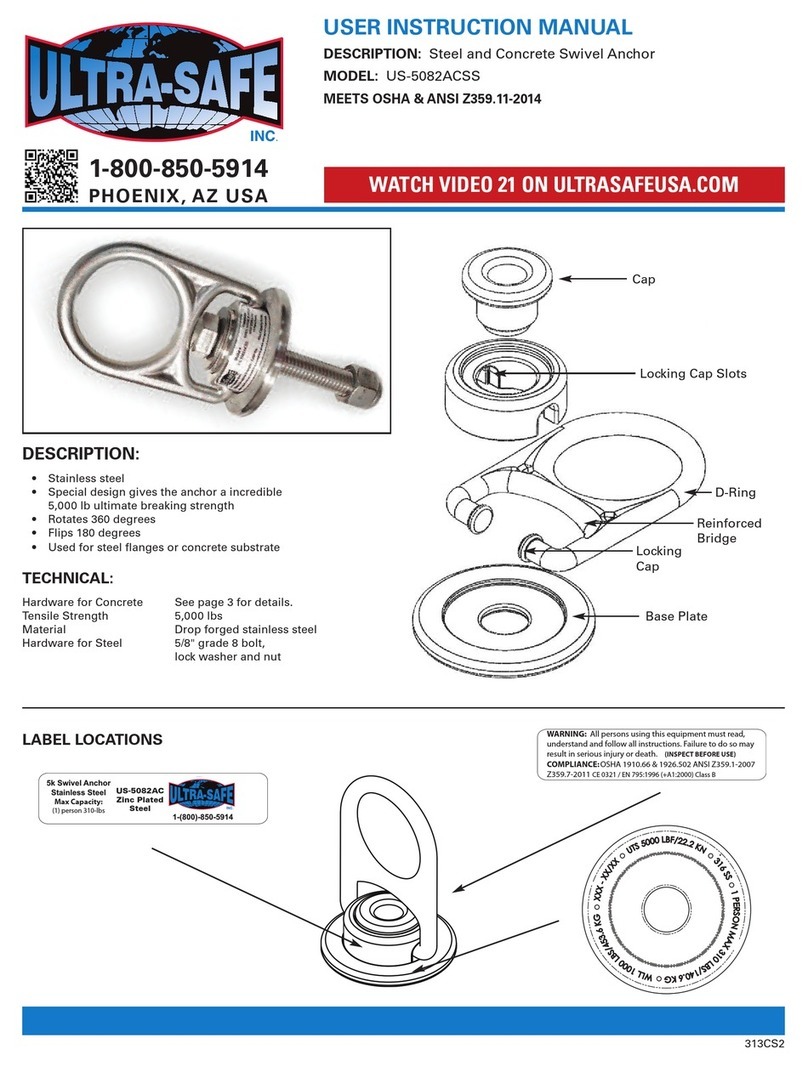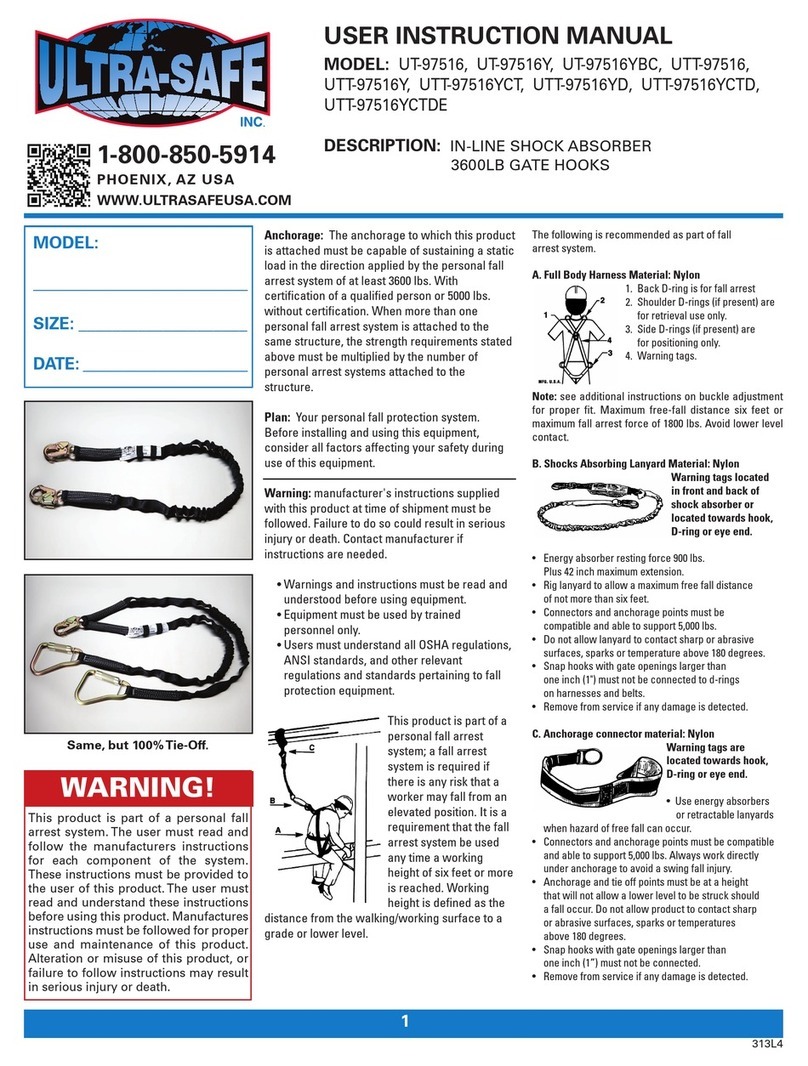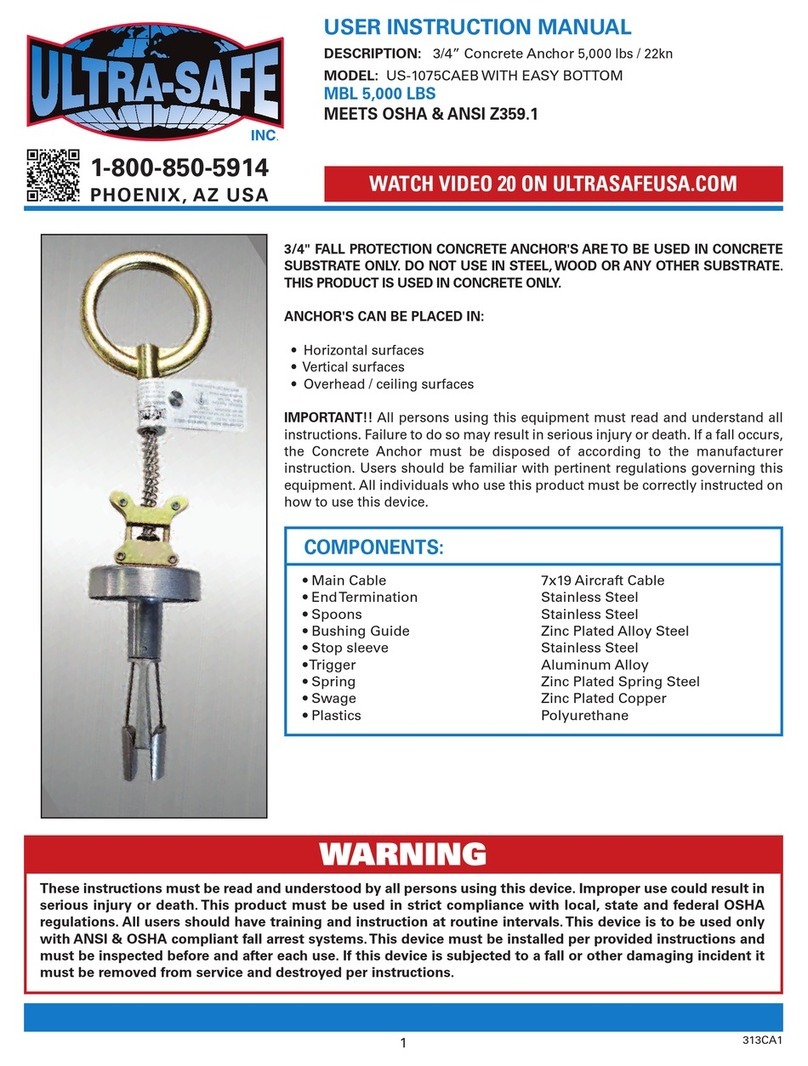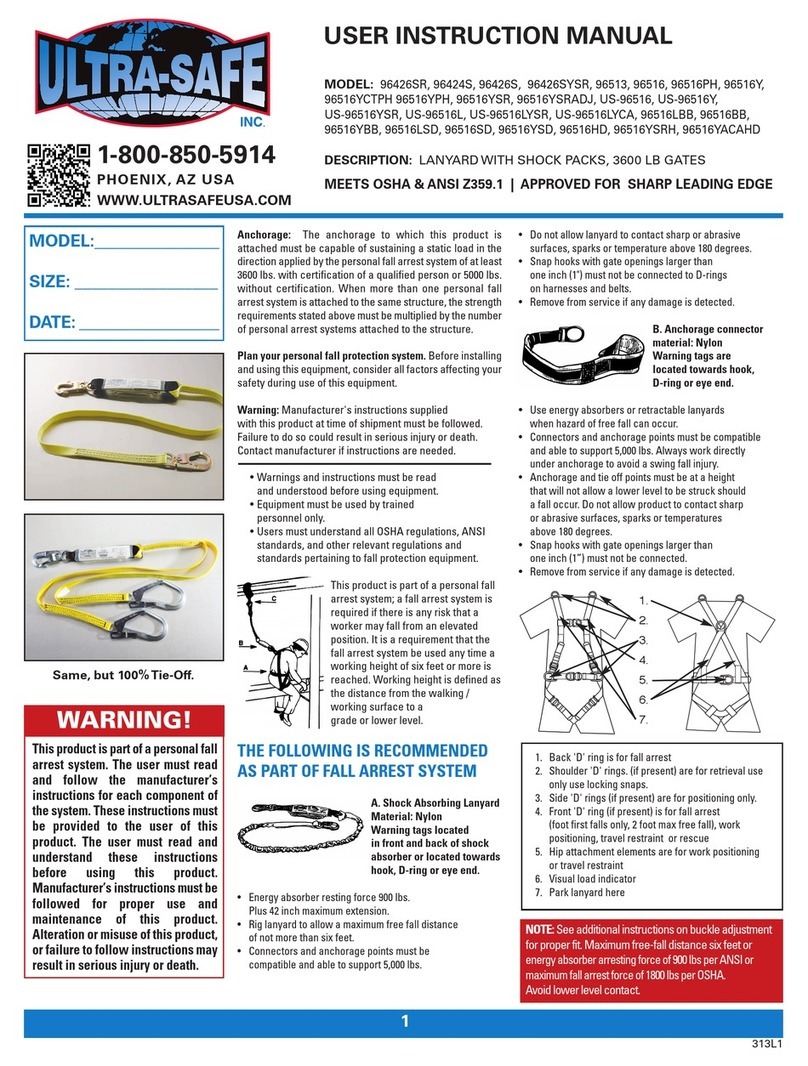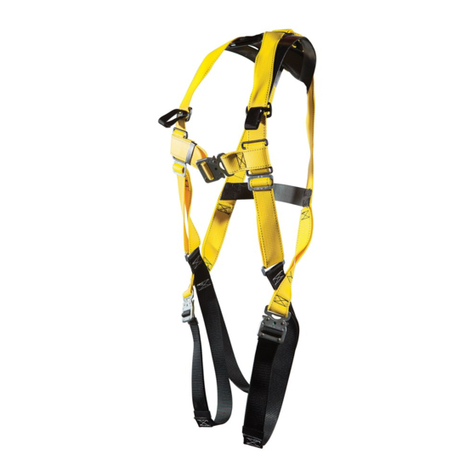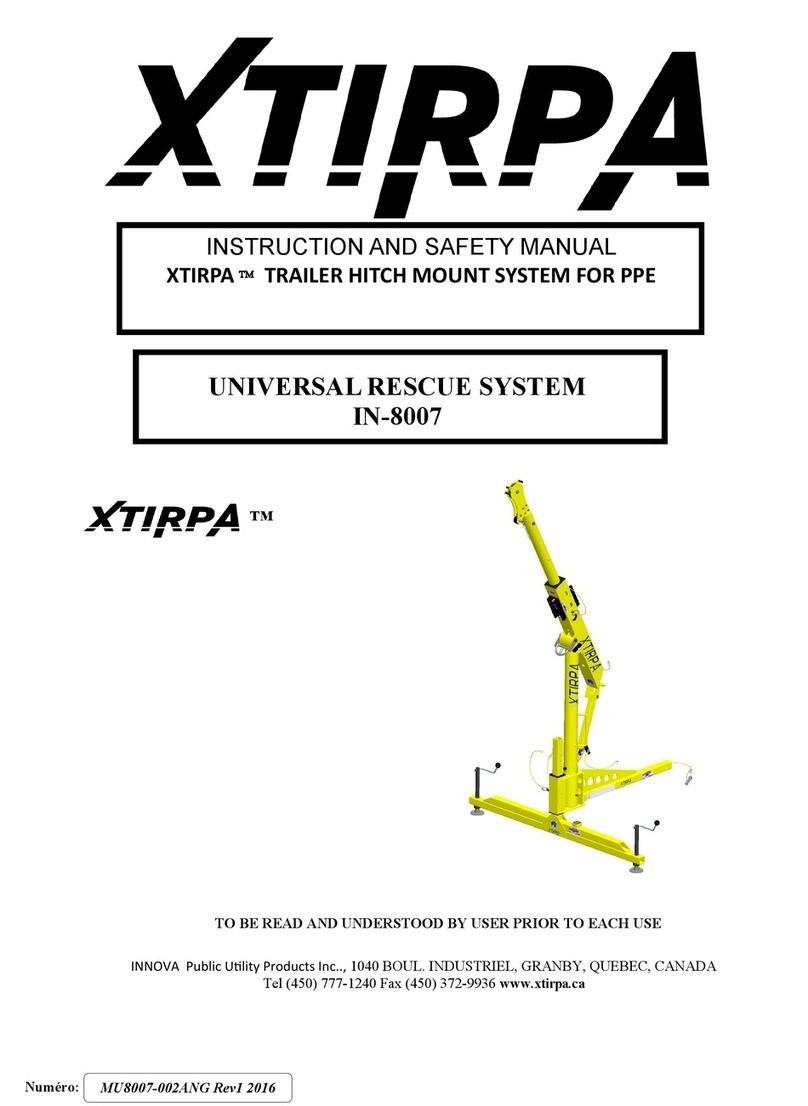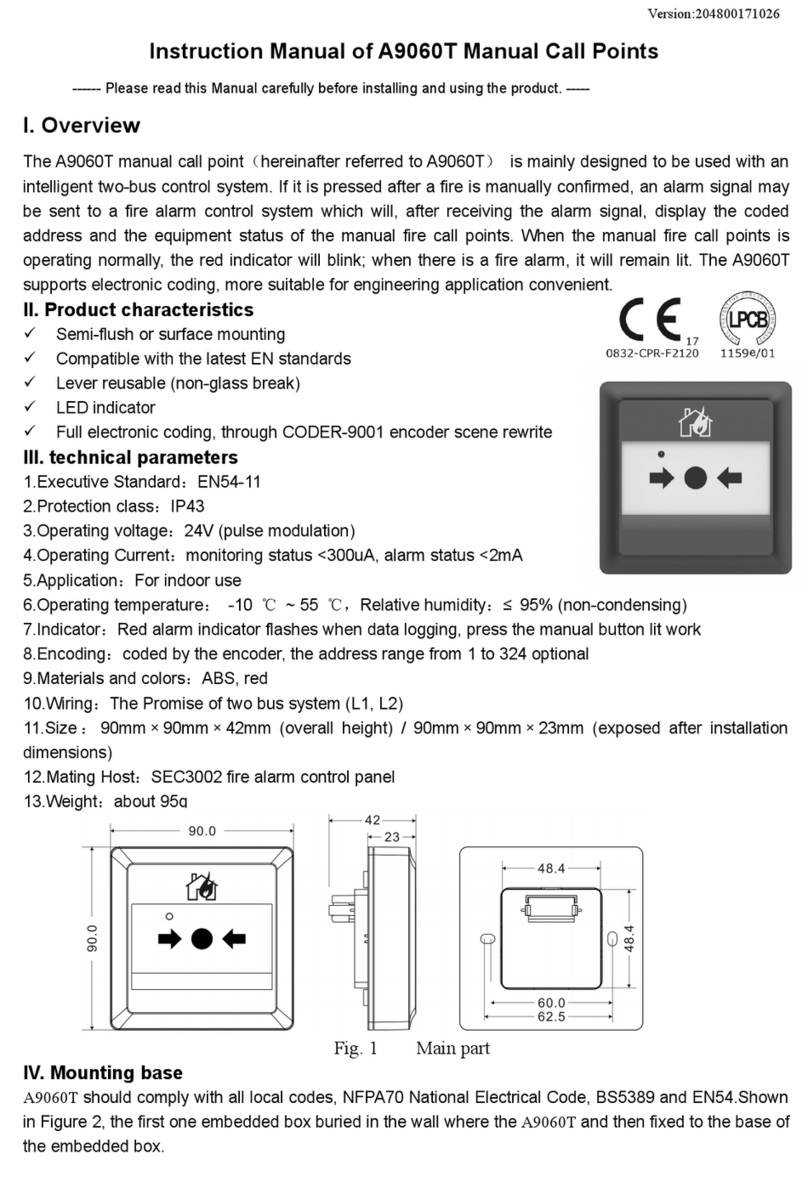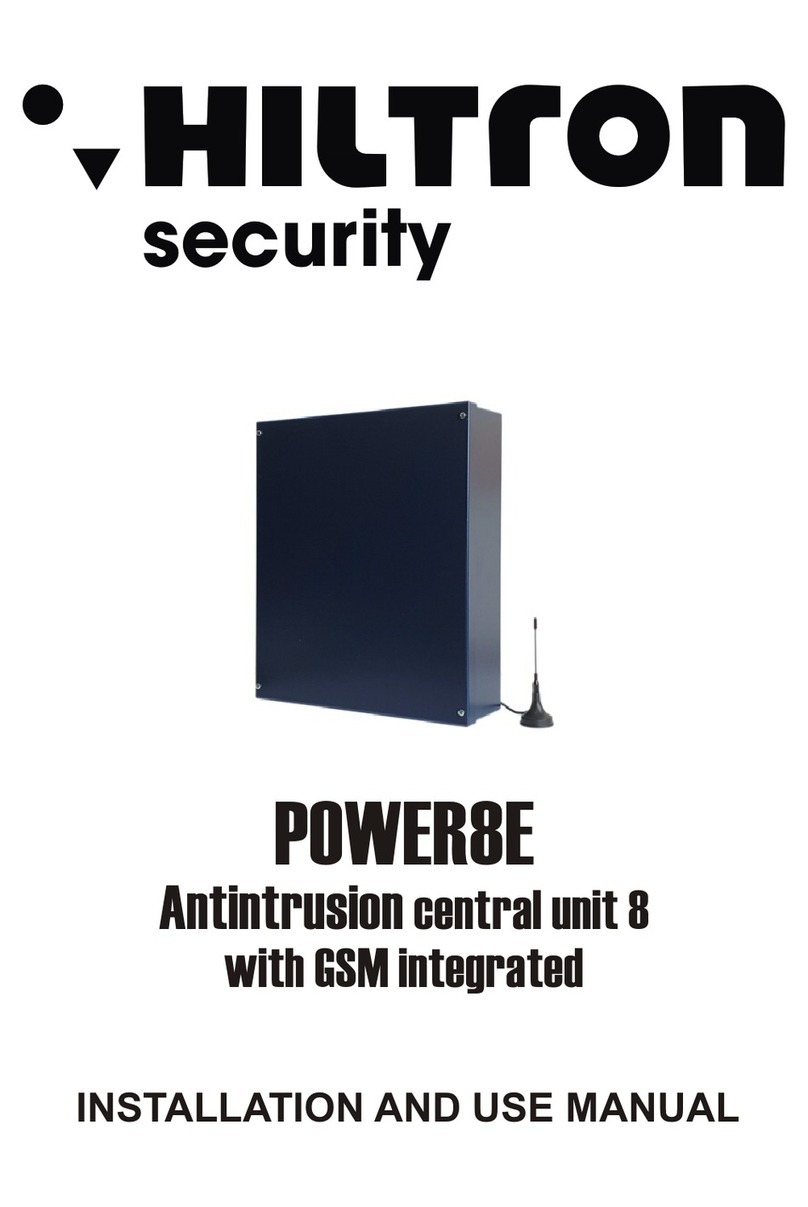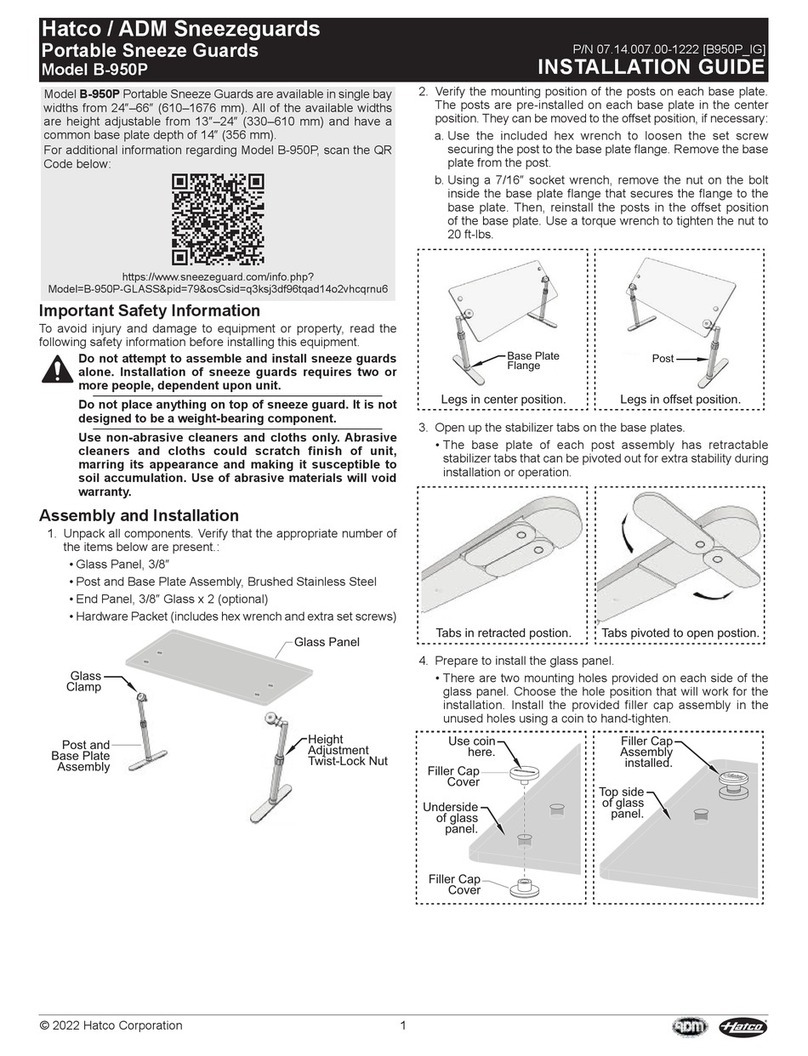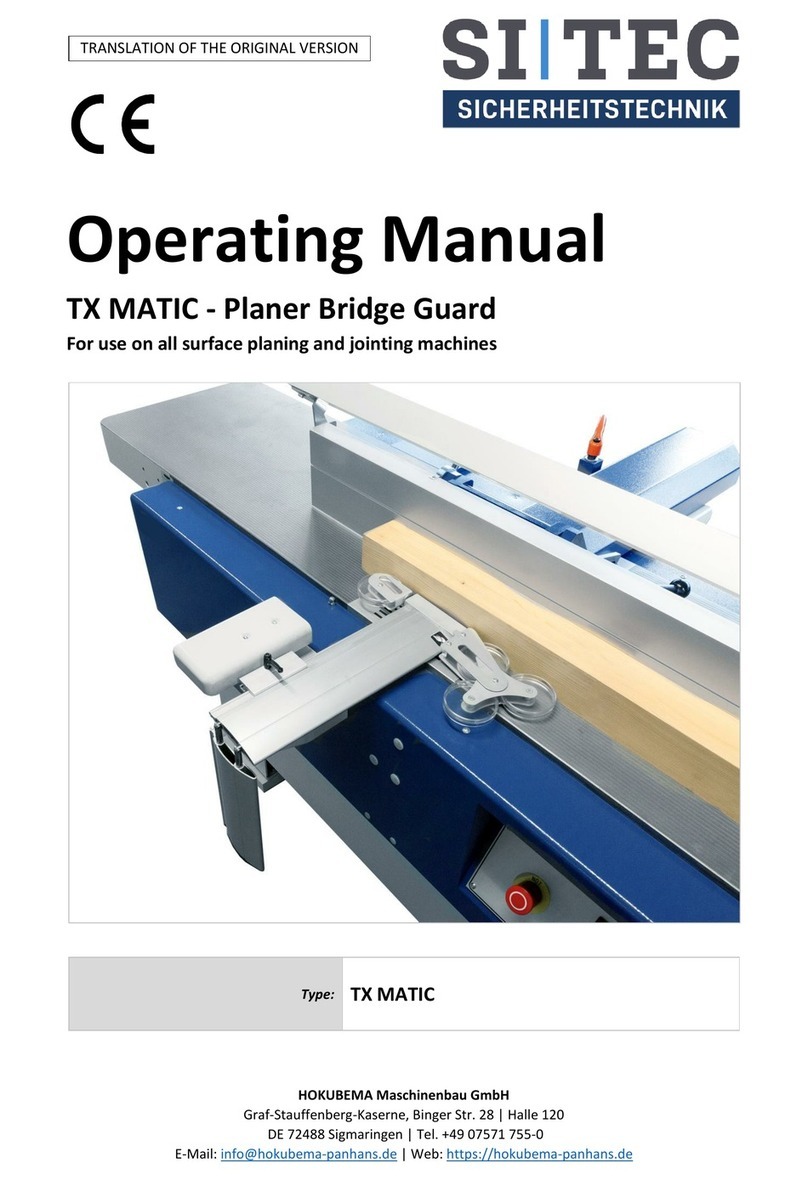
WARNING!
This product is part of a personal fall arrest system.
The user must read and follow the manufacturer’s
instructions for each component of the system.
These instructions must be provided to the user of
this product. The user must read and understand
these instructions before using this product.
Manufacturer’s instructions must be followed for
proper use and maintenance of this product.
Alteration or misuse of this product, or failure to
follow instructions may result in serious injury or
death.
1
MODEL:
________________________
SIZE: ___________________
DATE: _________________
_
Anchorage: The anchorage to which this product is
attached must be capable of sustaining a static load in
the direction applied by the personal fall arrest system
of at least 3600 lbs. with certification of a qualified
person or 5000 lbs. without certification. When more
than one personal fall arrest system is attached to the
same structure, the strength requirements stated above
must be multiplied by the number of personal arrest
systems attached to the structure.
Plan your personal fall protection system.
Before installing and using this equipment, consider all
factors affecting your safety
during use of this equipment.
Warning: Manufacturer's instructions supplied with
this product at time of shipment must be followed.
Failure to do so could result in serious injury or death.
Contact manufacturer if instructions are needed.
• Warnings and instructions must be read and
understood before using equipment.
• Equipment must be used by trained personnel only.
• Users must understand all OSHA regulations, A SI
standards, and other relevant regulations and
standards pertaining to fall protection equipment.
This product is part of a personal
fall arrest system; a fall arrest
system is required if there is any risk
that a worker may fall from an
elevated position. It is a requirement
that the fall arrest system be used
any time a working height of six feet
or more is reached. Working height
is defined as the distance from the
walking/working surface to a grade
or lower level.
THE FOLLOWING IS RECOMMENDED
AS PART OF FALL ARREST SYSTEM.
Shock Absorbing Lanyard Material: Nylon
Warning tags located
in front and back of
shock absorber or
located towards hook,
D-ring or eye end.
• Energy absorber resting force 900 lbs.
Plus 42 inch maximum extension.
• Rig lanyard to allow a maximum free fall distance
of not more than six feet.
• Connectors and anchorage points must be
compatible and able to support 5,000 lbs.
• Do not allow lanyard to contact sharp or abrasive
surfaces, sparks or temperature above 180 degrees.
• Snap hooks with gate openings larger than
one inch (1") must not be connected to D-rings
on harnesses and belts.
• Remove from service if any damage is detected.
Anchorage connector
material: Nylon
Warning tags are
located towards hook,
D-ring or eye end.
•
Use energy absorbers or retractable lanyards
when hazard of free fall can occur.
• Connectors and anchorage points must be compatible
and able to support 5,000 lbs. Always work directly
under anchorage to avoid a swing fall injury.
• Anchorage and tie off points must be at a height
that will not allow a lower level to be struck should
a fall occur. Do not allow product to contact sharp
or abrasive surfaces.
• Snap hooks with gate openings larger than
one inch (1”) must not be connected.
•
Remove from service if any damage is detected.
Same, but 100% Tie-Off.
313LK3
FLAME RESISTANT 100% KEVLAR
WEBBING WITH AN 800 DEGREE
CHAR TEMPERAT RE AND LIMITED
RESISTANCE TO 1000 DEGREES
USER INSTRUCTION MANUAL
DESCRI TION: LANYARD NOMEX / KEVLAR F.R. 3600 LB GATE
MODEL:
96516K, 96516KY, 96516KY R, 96516KYCT, 96516KLYCTDE,
96516KLCADE, 96516KLDE, 96516KLYDE, 96516KLYCTDE
MEETS OSHA & ANSI Z359.1
1-800-850-5914
HOENIX, AZ USA
WATCH VIDEO 23 ON LTRASAFE SA.COM
ALSO AVAILABLE IN ARC FLASH ASTM F887 RATED.
1.
2.
3.
4.
5.
6.
7.
1. Back 'D' ring is for fall arrest
2. Shoulder 'D' rings. (if present) are for retrieval use
only use locking snaps.
3. Side 'D' rings (if present) are for positioning only.
4. Front 'D' ring (if present) is for fall arrest
(foot first falls only, 2 foot max free fall), work
positioning, travel restraint or rescue
5. Hip attachment elements are for work positioning
or travel restraint
6. Visual load indicator
7. Park lanyard here
NOTE: ee additional instructions on buckle
adjustment for proper fit. Maximum
free-fall distance six feet or
energy
absorber arresting force of 900 lbs per AN I
or maximum fall arrest force of 1800 lbs per
O HA.
Avoid lower level contact.



